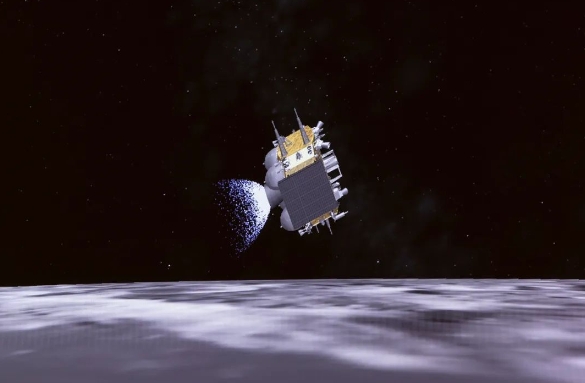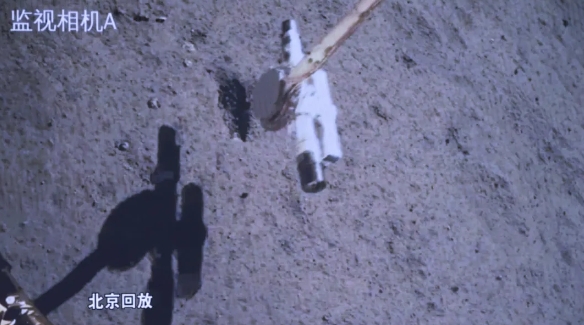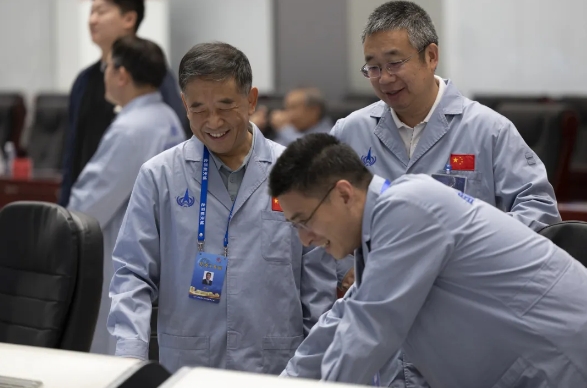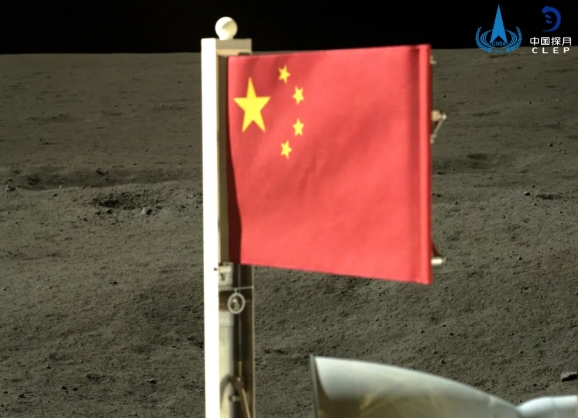Add:1506,Tower West,Jinrun International Plaza,No.85 East Nanxijiang Street,Jianye District,Nanjing,China,210019
Tel: 025-58866358
025-58933315
Fax:025-58867358
E-mail:info@bonagrain.com
China's Chang'e 6 robotic probe completed the most important part of its lunar adventure on Tuesday morning when its ascender, carrying samples collected over two days in a sealed container, lifted off from the moon's far side.

▲A simulation at the Beijing Aerospace Control Center shows the Chang'e 6 ascender, carrying lunar rock and dust samples, lifting off from the moon's far side on Tuesday morning. JIN LIWANG/XINHUA/CHINA DAILY
The return of the ascender to lunar orbit marks the successful completion of the first sampling and liftoff operations on the moon's far side by any country, the space administration said.
The Chang'e 6 probe, which represents the world's first attempt to bring samples from the lunar far side back to Earth, was launched by a Long March 5 heavy-lift carrier rocket on May 3 from the Wenchang Space Launch Center in Hainan province. It entered lunar orbit on May 8.
The 8.35-metric-ton spacecraft consists of an orbiter, a lander, an ascender and a reentry capsule.
After a host of sophisticated maneuvers, the lander touched down on the moon's far side on Sunday morning. It soon started using a scoop to collect surface regolith, the loose material covering solid rock, and a drill to dig up subsurface material.
At the same time, several mission payloads, including a panoramic camera, a lunar mineralogical spectrometer and a lunar soil composition analytical instrument, were activated for operation on the moon.

▲An image of the sampling operation, taken by a camera onboard the Chang'e 6 lander, is beamed back to Earth. JIN LIWANG/XINHUA/CHINA DAILY
Three European scientific apparatus carried by the Chang'e 6 lander — a radon-measuring instrument from France's national space agency, a dedicated negative ion instrument developed by the Swedish Institute of Space Physics with support from the European Space Agency, and a passive laser retroreflector from Italy's National Institute for Nuclear Physics — also worked on the lunar surface over the past two days.
In addition, a mini-rover carrying a special camera was released from the lander, and it moved around the lander to take pictures, the administration said.
In the next stage, the ascender will remain in lunar orbit for a certain period of time and then rendezvous and dock with the combination of orbiter and reentry capsule. It will transfer the sample-loaded container to the reentry capsule before undocking.

▲Hu Hao (left), chief designer of the Chang'e 6 mission, Li Dong (center), chief designer of the Long March 5 carrier rocket, and Wang Qiong, deputy chief designer of the mission, discuss the progress of the mission. JIN LIWANG/XINHUA/CHINA DAILY
Giuseppe Reibaldi, president and founder of the Moon Village Association, a Vienna-based NGO, and executive secretary of the Global Expert Group on Sustainable Lunar Activities, said this is the first time in human history that samples have been collected from the moon's far side.

▲An image provided by the national space administration shows China's national flag unfurled on the Chang'e 6 lander, becoming the first flag of any country to fly on the lunar far side. JIN LIWANG/XINHUA/CHINA DAILY
Yang Yuguang, a senior space industry observer and vice-chair of the International Astronautical Federation's Space Transportation Committee, said the lunar far side samples are of "unparalleled scientific value", because the history of the far side is very different from that of the near side.
Studying the Chang'e 6 samples will definitely help scientists unravel some long-standing mysteries about the moon, he said.
Yang noted that the ascender's liftoff from the lunar far side was a challenging task, because it needed precision planning to ensure the ascender reached a predetermined orbital position, and there was only the Queqiao 2 relay satellite capable of providing technical assistance.
The next challenge, he said, will be the execution of the rendezvous and docking maneuvers, as they will also require an extreme level of agility and accuracy.
Reporter: Zhao Lei


